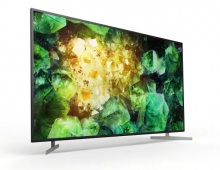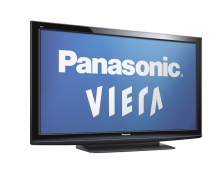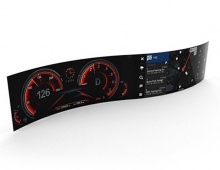
LCD TV Shipment Growth to Improve in 2012
Consumer demand for TVs has been softer than expected in 2011, but showing signs of improvement late in the year.
However, inventory pressure plagued the industry through much of early 2011 and led to a sharp reduction in shipments to retailers. The result is that global TV unit shipments are expected to rise only 0.1% in 2011. According to the latest forecast released in the NPD DisplaySearch Advanced Quarterly Global TV Shipment and Forecast Report, growth is expected to improve in 2012, rising 2% to 254 million units.
"Global economic conditions have improved in 2011, but more slowly than expected, and consumers in mature TV markets like Europe face continuing uncertainty, which is leading to very cautious spending patterns," noted Paul Gagnon, Director of North America TV Research for NPD DisplaySearch. Gagnon added, "Because price reductions are not as vigorous as a few years ago, partially due to a mature manufacturing base but also because of transitions to advanced features like LED backlights and 3D, consumers are becoming more willing to wait for peak sale periods to purchase."
Flat panel TV continues to grow, but at a more gradual pace of 2-4% per year as the rapid transition from CRT to LCD and plasma nears an end. LCD TV continues to be the dominant technology on a unit and revenue basis, and in fact seems likely capture even more market share due to a weaker outlook for plasma TV going forward. As LCD narrows the pricing gap with plasma at many sizes, the demand for plasma has fallen; NPD DisplaySearch expects this to continue and has reduced its forecast for plasma TV.
Large TV sizes also continue to show strong growth, with shipments of 40"+ and larger sets expected to grow 12% in 2012 while
LCD TV shipments will rise from 206M units in 2011 to 225M units in 2012, an increase of 9%, according to the research firm. LCD will account for more than 82% of all global TV shipments in 2011, rising to more than 88% in 2012, as demand for plasma falls and OLED TVs arrive late in the year in small quantities and at high prices. LCD is now a strong competitive technology at all sizes and should climb to more than 95% share by 2014 as CRT fades and OLED is slow to grow.
Premium features continue to grow, like LED backlights and 3D, and are keeping LCD TV average prices very stable, falling just 6% Y/Y on a volume weighted basis in 2011, the slowest year of LCD TV price erosion yet. Price erosion will be about the same in 2012 before picking up to 7-8% per year through 2015, but much less than the 24% decline seen in 2009. However, with the slower ASP erosion, total LCD TV revenue growth should remain positive through 2013 at 1-3% per year. The share of LED backlights in LCD TV shipments is expected to be about 46% in 2011, rising to nearly 68% in 2012. 3D will account for around 3% of LCD TV units this year.
Plasma TV units grew 30% in 2010 due to a favorable pricing advantage over LCD, but as that advantage has narrowed in 2011, shipments are expected to fall 11%, to 16.3 million units. The decline in unit growth and weak profits have led manufacturers to focus on more profitable segments, even at the expense of unit growth. As a result, plasma TV shipments are projected to fall to less than 10 million units by 2015.
The first OLED TV shipments are expected in the second half of 2012, but due to prices that are expected to be well above $4000 initially and remain significantly higher than mainstream high-end LCD TVs, will only grow to about 2.5% of the 40+ segment by 2015.
"Global economic conditions have improved in 2011, but more slowly than expected, and consumers in mature TV markets like Europe face continuing uncertainty, which is leading to very cautious spending patterns," noted Paul Gagnon, Director of North America TV Research for NPD DisplaySearch. Gagnon added, "Because price reductions are not as vigorous as a few years ago, partially due to a mature manufacturing base but also because of transitions to advanced features like LED backlights and 3D, consumers are becoming more willing to wait for peak sale periods to purchase."
Flat panel TV continues to grow, but at a more gradual pace of 2-4% per year as the rapid transition from CRT to LCD and plasma nears an end. LCD TV continues to be the dominant technology on a unit and revenue basis, and in fact seems likely capture even more market share due to a weaker outlook for plasma TV going forward. As LCD narrows the pricing gap with plasma at many sizes, the demand for plasma has fallen; NPD DisplaySearch expects this to continue and has reduced its forecast for plasma TV.
Large TV sizes also continue to show strong growth, with shipments of 40"+ and larger sets expected to grow 12% in 2012 while
LCD TV shipments will rise from 206M units in 2011 to 225M units in 2012, an increase of 9%, according to the research firm. LCD will account for more than 82% of all global TV shipments in 2011, rising to more than 88% in 2012, as demand for plasma falls and OLED TVs arrive late in the year in small quantities and at high prices. LCD is now a strong competitive technology at all sizes and should climb to more than 95% share by 2014 as CRT fades and OLED is slow to grow.
Premium features continue to grow, like LED backlights and 3D, and are keeping LCD TV average prices very stable, falling just 6% Y/Y on a volume weighted basis in 2011, the slowest year of LCD TV price erosion yet. Price erosion will be about the same in 2012 before picking up to 7-8% per year through 2015, but much less than the 24% decline seen in 2009. However, with the slower ASP erosion, total LCD TV revenue growth should remain positive through 2013 at 1-3% per year. The share of LED backlights in LCD TV shipments is expected to be about 46% in 2011, rising to nearly 68% in 2012. 3D will account for around 3% of LCD TV units this year.
Plasma TV units grew 30% in 2010 due to a favorable pricing advantage over LCD, but as that advantage has narrowed in 2011, shipments are expected to fall 11%, to 16.3 million units. The decline in unit growth and weak profits have led manufacturers to focus on more profitable segments, even at the expense of unit growth. As a result, plasma TV shipments are projected to fall to less than 10 million units by 2015.
The first OLED TV shipments are expected in the second half of 2012, but due to prices that are expected to be well above $4000 initially and remain significantly higher than mainstream high-end LCD TVs, will only grow to about 2.5% of the 40+ segment by 2015.





















